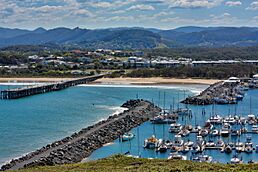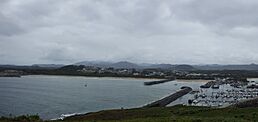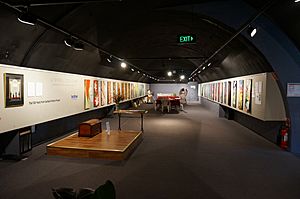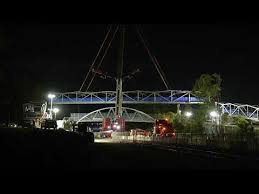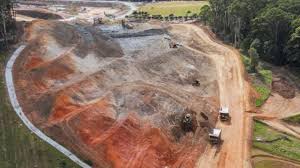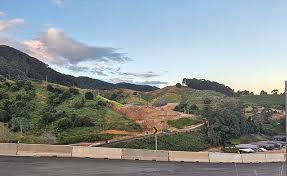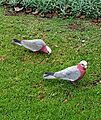Coffs Harbour facts for kids
Quick facts for kids Coffs HarbourNew South Wales |
|||||||||
|---|---|---|---|---|---|---|---|---|---|
|
Marina Bay
Marina at Sunset
Coffs Harbour Jetty
City Centre
South Wall Quary
Coffs Harbour Skyline
|
|||||||||
| Population | 78,759 (2021 census) (25th) | ||||||||
| • Density | 155.804/km2 (403.53/sq mi) | ||||||||
| Established | 1870s 1 September 1987 (city) |
||||||||
| Postcode(s) | 2450 | ||||||||
| Elevation | 21 m (69 ft) | ||||||||
| Area | 505.5 km2 (195.2 sq mi) | ||||||||
| Location | |||||||||
| LGA(s) | City of Coffs Harbour | ||||||||
| Region | Mid North Coast | ||||||||
| County | Fitzroy | ||||||||
| State electorate(s) | Coffs Harbour | ||||||||
| Federal Division(s) | Cowper | ||||||||
|
|||||||||
Coffs Harbour, often called Coffs, is a city on the coast of New South Wales, Australia. It is about 540 kilometres (336 miles) north of Sydney and 390 kilometres (242 miles) south of Brisbane. Coffs Harbour is one of the biggest cities on the North Coast. In 2021, about 78,759 people lived there.
The Gumbaynggirr people are the original Traditional Owners of Coffs Harbour. They have lived on this land for many thousands of years.

Coffs Harbour used to be known for its timber and farming. But in recent years, tourism has become very important for the city. It was once called the "Bananacoast" because of all the banana farms. Today, it's known as the "Coffs Coast" and attracts many visitors.
The city has a campus of Southern Cross University and a campus of the University of New South Wales for medicine. There are also public and private hospitals, several radio stations, and three large shopping centres. Coffs Harbour is close to many national parks, including a marine national park.
You can fly to Sydney, Melbourne, and Brisbane from Coffs Harbour Airport. You can also reach Coffs Harbour by road, by NSW TrainLink trains, or by bus.
Contents
- Exploring Coffs Harbour's Location
- Coffs Harbour's Past
- How Coffs Harbour Got Its Name
- Special Heritage Places
- People of Coffs Harbour
- Coffs Harbour's Weather
- Fun Things to Do in Coffs Harbour
- Learning in Coffs Harbour
- Improving the Pacific Highway
- Local News and Entertainment
- Getting Around Coffs Harbour
- Sports in Coffs Harbour
- Famous People From Coffs Harbour
- Yearly Events
- Images for kids
- See also
Exploring Coffs Harbour's Location
Coffs Harbour is a regional city located along the Pacific Highway. It sits between Newcastle and the Gold Coast. The city is a main service hub for people living in nearby towns. These include South West Rocks to the south and Grafton to the north.
Sawtell is a town about 10 kilometres (6 miles) south of Coffs Harbour. It is now often seen as part of the city itself.
The area around Coffs Harbour has many coastal resorts and apartments. The hills and mountains inland are covered with forests. You'll also find farms growing bananas, blueberrys, macadamia nuts, cucumbers, and tomatoes. Coffs Harbour is special because it's the only place in New South Wales where the Great Dividing Range mountains meet the Pacific Ocean.
The greater Coffs Harbour city includes several smaller areas and suburbs:
- Red Hill
- South Coffs
- West Coffs
- Coffs Harbour Jetty
- Park Beach
- Sandy Beach
- Diggers Beach
- Korora, West Korora
- Sapphire Beach
- Moonee Beach
- Emerald Beach
- North Boambee Valley
- Boambee, Boambee East
- Toormina
- Sawtell
- Bonville
Many towns and villages are also part of the wider Coffs Coast region:
- Coramba
- Nana Glen
- Corindi Beach and Red Rock
- Karangi
- Ulong
- Upper Orara
- Woolgoolga
Coffs Harbour's Past
The Gumbaynggirr people are the original inhabitants of the Coffs Harbour area. They have lived here for thousands of years. Their land stretched from the Nambucca River in the south to the Clarence River in the north. It also reached the Great Dividing Range in the west.
In the early 1900s, Coffs Harbour became a key place for timber production. Before the North Coast railway line opened, timber was mostly moved by ships along the coast. Sawmills needed jetties (piers) to export their timber. So, timber tramways were built to connect the forests, sawmills, and the jetties at Coffs Harbour.
How Coffs Harbour Got Its Name
The Gumbaynggirr language name for the harbour is Gitten Mirreh. This means 'big moon'.
The town of Coffs Harbour was named after John Korff. He was a ship builder and owner. In 1847, he had to take shelter from a storm there. He named the area Korff's Harbour.
However, a government surveyor accidentally changed the name. This happened in 1861 when he was marking out land in the area.
Special Heritage Places
Coffs Harbour has some places that are important for their history. These are called heritage-listed sites:
- 1 Breakwater Road: Ferguson's Cottage
- Coffs Harbour timber jetty, Jordan Esplanade
People of Coffs Harbour
In 2021, the population of Coffs Harbour was 78,759. This was an increase from 72,944 people in 2016. About 52.6% of the people are female. The average age in Coffs Harbour is 43 years old. Aboriginal and Torres Strait Islander people make up 5.6% of the population.
Most residents (75.5%) were born in Australia. Other common birthplaces include England (3.2%), New Zealand (1.3%), and Myanmar (1.1%). About 82.1% of people speak only English at home.
The main religions in Coffs Harbour are Catholic (20.0%) and Anglican (17.9%). Many people (29.3%) said they had no religion.
Coffs Harbour's Weather
Coffs Harbour has a humid subtropical climate. This means it has hot, wet summers and short, mild winters. Most of the rain falls in summer. The city gets a lot of sunshine, with 122.1 clear days each year.
Summers are warm, wet, and humid. Winters are mild, but nights can be cool. There have been many floods in the city's history. Major floods happened in 1917, 1938, 1950, 1963, 1974, 1977, 1989, 1991, 2009, and 2021.
| Climate data for Coffs Harbour MO (1991–2015, extremes to 1943) | |||||||||||||
|---|---|---|---|---|---|---|---|---|---|---|---|---|---|
| Month | Jan | Feb | Mar | Apr | May | Jun | Jul | Aug | Sep | Oct | Nov | Dec | Year |
| Record high °C (°F) | 43.3 (109.9) |
40.5 (104.9) |
35.9 (96.6) |
34.2 (93.6) |
29.8 (85.6) |
28.5 (83.3) |
30.3 (86.5) |
34.0 (93.2) |
35.2 (95.4) |
39.6 (103.3) |
43.3 (109.9) |
42.5 (108.5) |
43.3 (109.9) |
| Mean daily maximum °C (°F) | 27.4 (81.3) |
27.1 (80.8) |
26.1 (79.0) |
24.1 (75.4) |
21.6 (70.9) |
19.7 (67.5) |
19.1 (66.4) |
20.4 (68.7) |
22.8 (73.0) |
24.0 (75.2) |
25.1 (77.2) |
26.4 (79.5) |
23.6 (74.6) |
| Daily mean °C (°F) | 23.6 (74.5) |
21.8 (71.2) |
22.1 (71.8) |
19.6 (67.3) |
16.7 (62.1) |
14.5 (58.1) |
13.6 (56.5) |
14.5 (58.1) |
17.1 (62.8) |
19.0 (66.2) |
20.9 (69.6) |
22.3 (72.1) |
18.8 (65.9) |
| Mean daily minimum °C (°F) | 19.8 (67.6) |
19.6 (67.3) |
18.1 (64.6) |
15.2 (59.4) |
11.9 (53.4) |
9.4 (48.9) |
8.2 (46.8) |
8.7 (47.7) |
11.4 (52.5) |
14.1 (57.4) |
16.7 (62.1) |
18.3 (64.9) |
14.3 (57.7) |
| Record low °C (°F) | 11.0 (51.8) |
11.6 (52.9) |
9.9 (49.8) |
4.3 (39.7) |
0.4 (32.7) |
−0.6 (30.9) |
−3.2 (26.2) |
−2.7 (27.1) |
1.9 (35.4) |
3.7 (38.7) |
6.5 (43.7) |
7.4 (45.3) |
−3.2 (26.2) |
| Average rainfall mm (inches) | 176.4 (6.94) |
231.1 (9.10) |
223.4 (8.80) |
148.4 (5.84) |
155.9 (6.14) |
116.9 (4.60) |
73.7 (2.90) |
67.5 (2.66) |
48.5 (1.91) |
101.1 (3.98) |
179.5 (7.07) |
142.8 (5.62) |
1,668.2 (65.68) |
| Average rainy days (≥ 1.0 mm) | 10.9 | 11.8 | 13.6 | 10.2 | 9.6 | 7.4 | 6.0 | 4.9 | 5.3 | 7.4 | 10.6 | 10.3 | 108.0 |
| Average afternoon relative humidity (%) | 67 | 69 | 68 | 63 | 61 | 58 | 54 | 52 | 57 | 61 | 65 | 66 | 62 |
| Average dew point °C (°F) | 18.6 (65.5) |
19.0 (66.2) |
17.6 (63.7) |
14.8 (58.6) |
12.1 (53.8) |
9.6 (49.3) |
8.0 (46.4) |
7.8 (46.0) |
10.2 (50.4) |
12.8 (55.0) |
15.1 (59.2) |
17.2 (63.0) |
13.6 (56.4) |
| Source: Bureau of Meteorology | |||||||||||||
Fun Things to Do in Coffs Harbour
Coffs Harbour was once famous for its banana industry. One of the biggest attractions is the Big Banana. This is one of Australia's Big Things, which are large roadside objects. The Big Banana celebrated its 50th birthday in 2015. It celebrates the region's most famous export. There's also a popular underwater diving spot on a small natural reef.
The Coffs Harbour Jetty is an old timber pier with a lot of history. Coastal ships used to move timber from inland areas here. It was added to the NSW State Heritage Register in 2021. This shows how important it was as the longest timber jetty built in NSW in the 1800s. Plans are being made to improve the jetty area.
Close by is the Solitary Islands Marine Park. This park protects a rich underwater world. It has both tropical species from the north and temperate species from the south. Muttonbird Island is a great place to visit. You can walk along the breakwater from the harbour to reach it. This nature reserve protects a large breeding area for wedge-tailed shearwater birds. A path on Muttonbird Island leads to a viewing platform. From June to November, you can often spot whales from here.
Many national parks, reserves, and marine parks surround the city:
- Bellinger River National Park (west of Bellingen)
- Bindarri National Park (20 km west of the city)
- Bongil Bongil National Park (south of Sawtell)
- Cascade National Park (north of Dorrigo)
- Coffs Coast Regional Park (beachside reserves)
- Dorrigo National Park (south of Dorrigo)
- Hayden Dent Nature Reserve (northwest of Coffs Harbour)
- Junuy Juluum National Park (north of Dorrigo)
- Moonee Beach Nature Reserve (Moonee Beach-Emerald Beach)
- Nymboi-Binderay National Park (north of Dorrigo)
- Solitary Islands Marine Park (in the Tasman Sea)
- South Solitary Island (18 km NE from Coffs Harbour)
- Ulidarra National Park (Bruxner Park and Mount Coramba area)
- Yuraygir National Park (from Yamba to Red Rock)
The city gets its water from the nearby Orara River. It also gets water from the Nymboida River. Coffs Harbour also has its own Regional Botanic Garden.
Learning in Coffs Harbour
Coffs Harbour is home to the Coffs Harbour Education Campus (CHEC). This is a partnership between Southern Cross University, TAFE, and the Coffs Harbour Senior College.
Other universities include the University of New South Wales Rural Clinical School. This school is located at the Coffs Harbour Health Campus.
Local public and private high schools include:
- Coffs Harbour High
- Woolgoolga High
- Orara High
- Toormina High
- John Paul College
- Coffs Harbour Christian Community School
- Bishop Druitt College
- Coffs Harbour Senior College
Primary schools in the area include:
- Boambee Public
- Bonville Public
- Coffs Harbour Public
- Coramba Public
- Corindi Public
- Crossmaglen Public
- Karangi Public
- Kororo Public
- Lowanna Public
- Mullaway Public
- Nana Glen Public
- Narranga Public
- Upper Orara Public
- Sandy Beach Public
- Sawtell Public
- Toormina Public
- Tyalla Public
- Ulong Public
- William Bayldon Public
- Woolgoolga Public School
Private primary schools are:
- Mary Help of Christians
- St Augustine's
- St Francis Xavier's
Other schools in the area:
- Giingana Gumbaynggirr Freedom School
- Casuarina School for Steiner Education
- Bishop Druitt College
- Coffs Harbour Bible Church School
- Coffs Harbour Christian Community School
Special schools are public schools for students with long-term disabilities. These schools help students who need extra support. The Coffs Harbour Learning Centre helps these students.
Improving the Pacific Highway
The Pacific Highway goes right through the middle of Coffs Harbour. The NSW government is working on a big project to improve the highway. They are building a 14-kilometre (8.7-mile) bypass around Coffs Harbour. This new road will have three interchanges and three tunnels.
The bypass will start at Englands Road and go west to Coramba Road. It will then join near Campbell Close and Solitary Islands Way, Korora. This project will save drivers up to 12 minutes of travel time. It will also help drivers avoid up to 12 traffic lights. This makes trips to and from Coffs Harbour easier and safer for everyone. The project was approved in November 2020. It is expected to open to traffic in late 2026 and be finished in 2027. The cost is about $2.2 billion Australian dollars.
Local News and Entertainment
Newspapers
- News Of The Area – Available in print and online.
- Coffs Coast Advocate – This newspaper is now only online. It used to be printed twice a week.
Television
- ABC TV, ABC Family, ABC Entertains, ABC News (public TV channels)
- SBS, SBS Viceland, SBS Food, NITV, SBS World Movies, SBS WorldWatch (multicultural TV channels)
- Nine (NBN), 9Gem, 9Go!, 9Life and Extra
- Seven (formerly Prime7), 7two, 7mate, 7Bravo, 7flix, and Racing.com
- 10, 10 Bold Drama, 10 Peach Comedy, Gold
- Sky News Regional
Local news is provided by:
- Nine airs NBN News every night at 6pm. It includes local news for the Mid North Coast.
- The Seven Network (formerly Prime7) airs a local Seven News bulletin for the North Coast. This is on weekdays at 6pm.
- WIN Television airs short local news updates throughout the day.
Radio
Commercial Radio
- 2HC 639 AM and 100.5 FM – Offers talkback, news, sport, and music.
- Triple M 106.3 FM – Has some local shows like Moffee For Breakfast. It also plays shows from other cities.
- Hit 105.5 (105.5 FM) – Features a local Coffs Harbour Breakfast Show called the A.B & Ben Show.
Community Radio
- CHY FM 104.1 CHY FM website
- Racing Radio 107.1 FM
- 2AIR FM 107.9 2AIR website
Other Radio
- RawFM 88.0 FM
Getting Around Coffs Harbour
Bus Services
The bus network in Coffs Harbour covers a wide area. It goes from Grafton and Red Rock in the north to Macksville and Grassy Head in the south. Busways and Forest Coach Lines operate regular bus services. Forest Coach Lines also runs the Woopi Connect On Demand bus service in the Northern Beaches area.
Train Services
Coffs Harbour has train services provided by NSW TrainLink. Three XPT trains stop at Coffs Harbour station each day, going north and three going south.
Taxis
Local taxis are operated by Holiday Coast Transportation. They are part of the 13cabs service.
Air Travel
Coffs Harbour Airport has regular flights. These flights are operated by Link Airways, Qantas, and Regional Express. The passenger terminal is easy to reach via Hogbin Drive.
The Coffs Harbour Aero Club helps private pilots. You can take flying lessons, go on discovery flights, and arrange charter flights from the club. They also work with local high schools to teach students how to fly.
Sports in Coffs Harbour
The most popular sport in Coffs Harbour is Rugby league. The city has four clubs in the Group 2 rugby league competition:
These clubs have teams for all ages, from under-7s to the top adult teams.
There is also a local Australian rules football competition. It has three clubs in the city: Coffs Harbour, Northern Beaches–Woologoolga, and Sawtell Saints.
Other sports include:
- Men's and women's soccer league
- Two rugby union clubs (Coffs Harlequins and Southern Cross University)
- Junior and senior basketball competitions (with the representative Coffs Suns team)
- Field hockey
- Netball competitions
In 2001, Coffs Harbour hosted important soccer matches. These were for the 2002 FIFA World Cup qualification. One famous game played here was Australia 31–0 American Samoa. This set a new world record for the biggest win in international soccer.
The Wallabies (Australia's national rugby union team) used to train in Coffs Harbour. This was at Pacific Bay Resort in the 2000s.
Coffs Harbour also hosted the City vs Country Rugby League games in 2007 and 2013.
The city is home to the Coffs Harbour International Stadium. This stadium has hosted FIFA World Cup Qualifiers and Women's 2008 Beijing Olympics Qualification fixtures for the Matildas (Australia's national women's soccer team). It has also held National Rugby League (NRL) pre-season games and domestic cricket matches. Coffs Harbour is also a great place for skydiving because of its amazing views where the mountains meet the sea.
The region has hosted international rallying events since the 1970s. It was the host city for Rally Australia, a round of the World Rally Championship in 2011. The rally used roads in nearby areas as well as Coffs Harbour. It returned to Coffs Harbour permanently in 2013. The rally was last held here in 2018.
Coffs Harbour also has three popular local sporting events each year:
- The Coffs Harbour Triathlon (bcu Coffs Tri)
- The Coffs Harbour running festival
- The Coffs Ocean Swims
These events raise money for local children's charities.
Famous People From Coffs Harbour
Many notable people have connections to Coffs Harbour:
- Attila Abonyi – former Australian international soccer player
- Kevin Bartlett – racing driver
- Liz Cambage – basketball player
- Russell Crowe – actor
- Jon English – singer, songwriter, and actor
- Michael Ennis – rugby league player and sportscaster
- Kevin Gordon – rugby league player
- Clint Greenshields – rugby league player
- David Helfgott – concert pianist
- Deborah Knight – radio host and news journalist
- Wendy Matthews – singer
- Mark McGowan – former Premier of Western Australia
- Luke Metcalf – rugby league player
- Emma Moffatt – triathlete and Olympic bronze medalist
- Tom Mooney – rugby league player
- David Mullane – rugby league player
- George Negus – author, journalist, and TV presenter
- Ben Newton – Paralympics gold medalist in wheelchair rugby
- Melinda Pavey – NSW state politician
- Nathan Quinn – rally driver
- Dick Smith – entrepreneur
- Jack Thompson – award-winning actor
- Clare Wheeler – soccer player for Australia
Yearly Events
Coffs Harbour hosts several exciting events each year:
- National Touch League (March)
- "International Charity Football Match" (raises money for homeless youth)
- Ella7s (Australia's largest Indigenous Rugby Carnival) (March)
- Coffs Coast International Buskers Festival (October)
- Harmony Festival (March)
- Rally Australia (November)
- STILL: National Still Life Award (November)
Images for kids
See also
 In Spanish: Coffs Harbour para niños
In Spanish: Coffs Harbour para niños


